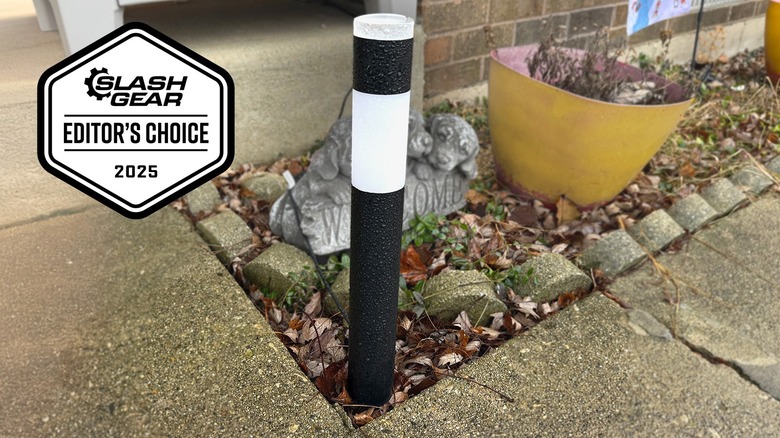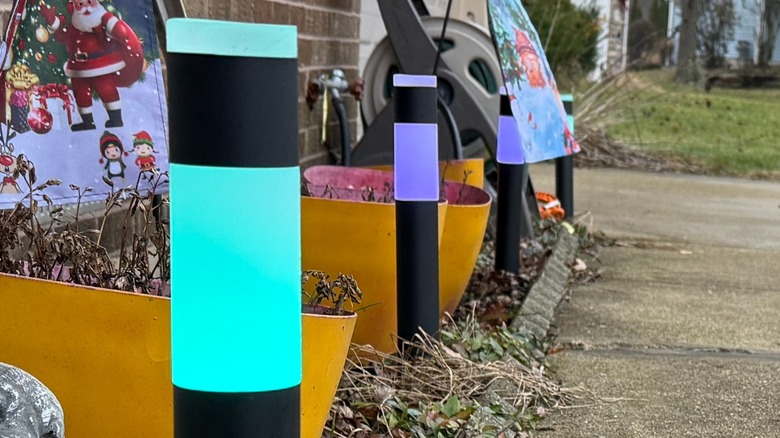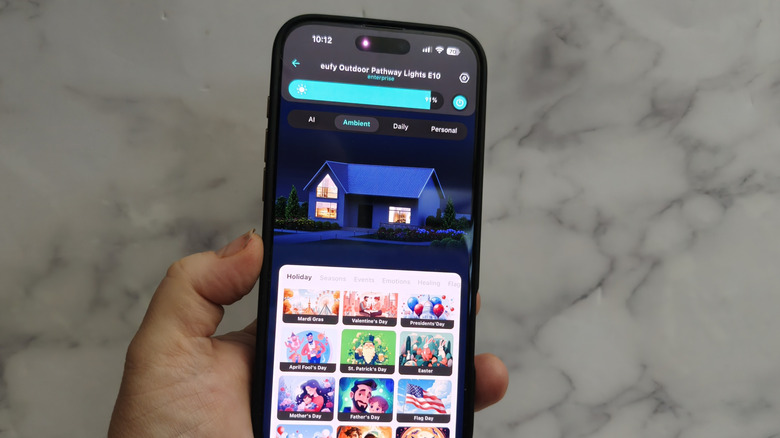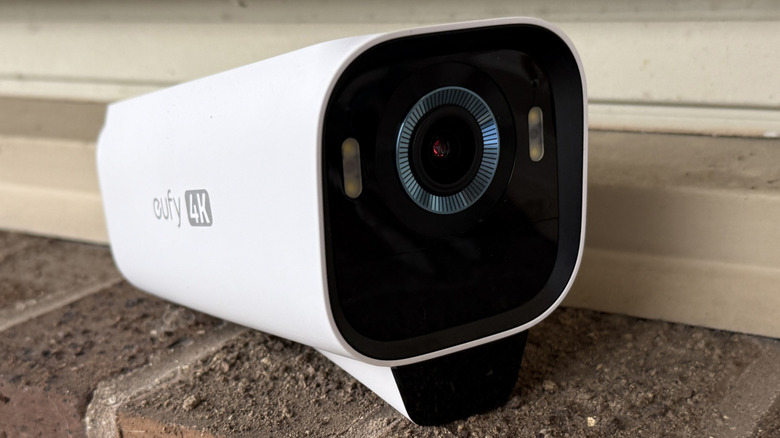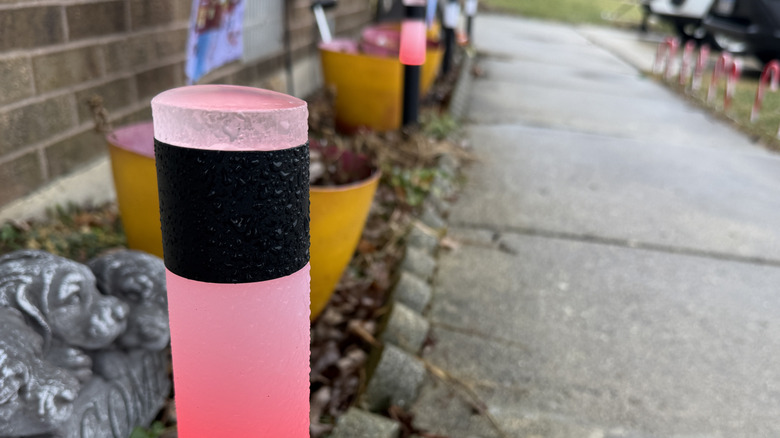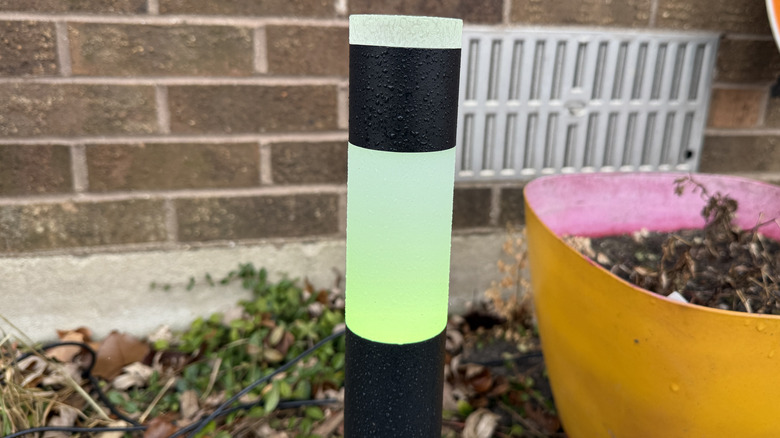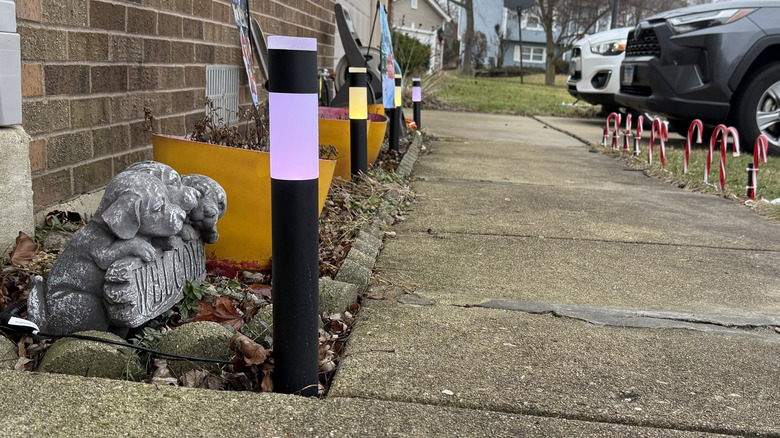Eufy Outdoor Pathway Lights E10 Review: Closer To The Smart Home Dream
- Style fits any home
- Versatile and simple to use
- Part of a burgeoning smart home system
- Require outdoor electrical outlet
- Plug is far too large for its own good
- Some features aren't quite fully active
We may receive a commission on purchases made from links.
Ever since the idea of a "smart home" began to spread, I've been waiting for smart home devices that were actually smart. Often the term "smart" is added on to any product that has a Wi-Fi antenna and an app that you can download. But few smart home devices really feel ... smart. Sure, they connect to the internet, and maybe you can check on them from your phone, but it's not what I had in mind.
Rather, I'm looking for an ecosystem of devices that work together somehow — something that feels smart. I want the devices to be interconnected, and the closest I've gotten so far comes in the form of my Vivint smart home. Vivint works with a number of smart home makers like Kwikset and Philips so that when a smoke alarm goes off, all my lights can turn on to 100%. When I punch in the code to unlock my front door, my alarm system turns off and my living room lights come on. Unfortunately, those instances have become the exception more than the rule.
So, when I visited IFA in Berlin, and talked to Eufy about a set of path lights it was debuting, I was intrigued. According to Eufy, when you pair these path lights along with a Eufy camera, you can turn lights on to welcome you home or turn the lights blinking red when a stranger shows up. As it turns out, that's exactly how they work, but with an unforeseen caveat. I've been using the Eufy Outdoor Pathway Lights E10 for a little under four weeks, and this is my full review.
Light the way
These pathway lights are similar to a lot of others that you've likely seen in recent years. They're cylinders that are two inches in diameter. They're sixteen inches tall and you drive them into the ground with removable spikes on the bottom. There are two lights — a three-inch tall, frosted cylinder near the top of the light and a half-inch tall, frosted cap on top. They're separated by a 1.5-inch collar between the two. Both areas light up the same color. You can't mix and match the top and bottom color, but you can alternate the lights on each of the four individual fixtures.
These are wired to a normal 110v outlet with a control module near the plug and about twelve feet of wire between the control module and the first connector. The individual lights are wired to the connector at T-junctions spaced out about 10 feet apart. The cables connecting the lights are about twelve inches long and all the cables connect to each other with durable, watertight fittings. Overall, the placement of the path lights can be very versatile, depending on your needs, but it's important to remember that they use a electrical outlet plug, so you'll need an outdoor outlet to plug them in. There's no option to hard wire these to an electrical box.
Highly programmable
The lights themselves can be programmed to do just about anything. There are dozens of presets you can choose from to make your lights more festive. As it happens, I reviewed these lights during the Thanksgiving and Christmas holidays, and the Eufy life app had several presets to choose from for both holidays.
You can schedule the lights to turn on and off whenever you want, including sunset and sunrise if you want them on all night. Personally, I scheduled my lights to turn on at sunset and turn off at midnight, but you can do anything you want in that regard. You can also set up special sequences during a certain day while not overwriting your normal program which is a nice touch.
The app itself is a bit cartoonish, especially where you choose the presets. Of course, there's AI. You can have the app's AI create a random light show for you with the "Magic Dice" scene generator, or you can type in a prompt to generate the show for you. I tried a few prompts. My most successful was a prompt to show colors seen on the U.S.S. Enterprise in "Star Trek."
Add in the camera for an interesting experience
The part of what Eufy setup that was exciting to me was when you add in a Eufy camera — and Eufy also sent over a pair of eufyCam S3 Pro cameras to go along with the pathway lights — these devices can work together. Granted, these are two devices from the same company that work together — this isn't all that uncommon. That's a hurdle we still need to overcome.
The Eufy S3 Pro camera has its own neat capability — also powered by AI. The camera can do facial recognition for people that come to your home often. It's pretty easy to set up too — the camera collects stills of all the people it sees and you can tell the AI who is who. In the future when they come home, the camera can tell you not just "someone is at the front door" but "Your wife is at the front door."
The camera is battery operated, so it can be installed anywhere. It also has a solar panel on its top, so it can theoretically stay charged for the long haul. I've been using the camera on a covered porch (which doesn't get much sun) and the camera's been great for these two weeks.
Words are important
Of course, the part I really wanted to test failed to live up to my expectations, but I think that might be more my fault. Technically, the product page for the pathway lights reads "Sync your lights with Eufy cameras to emit welcoming, warning, or personalized light themes when people are detected, fostering safety and community warmth. Technically the lights work that way. But what I thought was possible and what's actually possible comes down to a single word: "or."
I was told that same thing at IFA (or similar words to that effect) which is why I got so excited about the prospect. But what I didn't account for was the fact that the "or" represented a barrier, not a possibility. You can program the lights to emit a welcoming light when you come home, or you can program the lights to emit a warning, but what I didn't realize was that I could not do both.
I can program the lights to turn on when the camera sees a person, but I cannot tap into the known/stranger functionality of the camera to dictate what happens to the lights. For example, I cannot set up two routines — one that turns the lights on when I come home, and another that turns the lights red when a stranger approaches. I can set up times for those actions, such as if the camera sees a person between the hours of 1:00am and 6:00am, that person is likely up to no good, so it can turn the lights red. But I can't do it specifically for a stranger versus a recognized face.
Meanwhile, I asked Eufy about all this and I was told that this functionality would be coming in the future, but as always, we judge a product on what it can do today, not on what it might be able to do tomorrow.
It's right there
I don't know where the disconnect is, but I can guess at some of it. First of all, the security cameras and the pathway lights connect to different apps. The camera connects to Eufy Security while the pathway lights connect to Eufy Life. But within the Eufy life app, I can tell the pathway lights to react to a human detected by the camera, so the two apps are connected in that basic way.
I am not a coder, so I can't tell you whether or not tapping into the facial recognition part of the camera is a simple matter or highly complex. But it occurs to me that something is collecting that stranger versus known person data, and you should be able to transmit that info to a different app by the same software maker, but I also suspect that for security reasons you can't.
So, at the end of the day, the camera and pathway lights can and do work together, but that interaction is very limited, which brings us back to the same smart home complaint I had — these devices should work together in a great way to make a home smart. In a way they do, but it's pretty superficial compared to what I hoped for.
Eufy Pathway Lights E10 price, availability, and verdict
The Eufy Patheway Lights E10 can be found on Amazon and Eufy's website for $169.99. Meanwhile, the EufyCam S3 Pro kit (that includes two cameras and a base hard drive kit) retails for $549.99 on Amazon. My conclusion will be based on the pathway lights alone — the camera will have to wait for another review.
Pathway lights can be a beautiful addition to the curb appeal of your home, and these lights are no exception. The design is fairly basic, but also neutral enough to go with just about any home from traditional brick to even modern steel. These lights won't look out of place, regardless of what your home looks like. I also like that you can program them individually, or in a theme. At $170, they're pricey, but a good set of outdoor lights usually are because of the rigors they have to put up with.
I wish the two devices worked better together, but I can't honestly ding the pathway lights for that. The plug is way too big, and there should be a direct-wired solution for those who can accommodate it. But as for the lights themselves, they're super solid and they do the job as advertised. I've never had a connectivity issue, nor have I had a situation where the lights failed to respond to a commend. So they're great, but my dreams for a truly smart home remain just out of reach for the moment.
